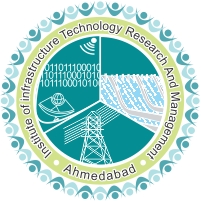A Review on Different Mechanisms Used in Power Generation Through Speed Bumps
Authors :- A Pandya, M Shah, B Pramod, N Srivastava
Publication :- Advances in Material Science and Metallurgy Select Proceedings of ICFAMMT 2022, Lecture Notes in Mechanical Engineering, Springer.
With the advancement of technology and change in human lifestyle, the use of motor vehicles has increased significantly over the last few decades. Increase in number of motor vehicles on road necessitates traffic calming measures for enhanced safety conditions and help reducing the accident rates. Speed bumps (or speed breakers) are widely used in several areas where a controlled movement of vehicle is required at reduced speeds such as signals, crossway, parking area, railway crossing, hospital area, roundabouts, markets, toll booths, and school areas. When a vehicle passes through a speed bump, a large amount of energy is exchanged between the vehicle and the road bump which depends on the type and weight of the vehicle and also on the height and material of the bump. Using appropriate mechanisms, the speed breakers can be converted to power generating units, and the produced electricity can be used for low power consuming devices like traffic signals, lights, hoardings, speed indicators, and emergency calling systems. In this work, we review four different mechanisms of power generation through a speed breaker: roller mechanism, rack and pinion mechanism, air piston mechanism, and crankshaft mechanism. We also briefly compare these mechanisms in terms of their design, maintenance, vibrations, and efficiency. It is noted that the ‘rack and pinion mechanism’ offers several advantages over other mechanisms in terms of mounting, frictional losses, and efficiency.

